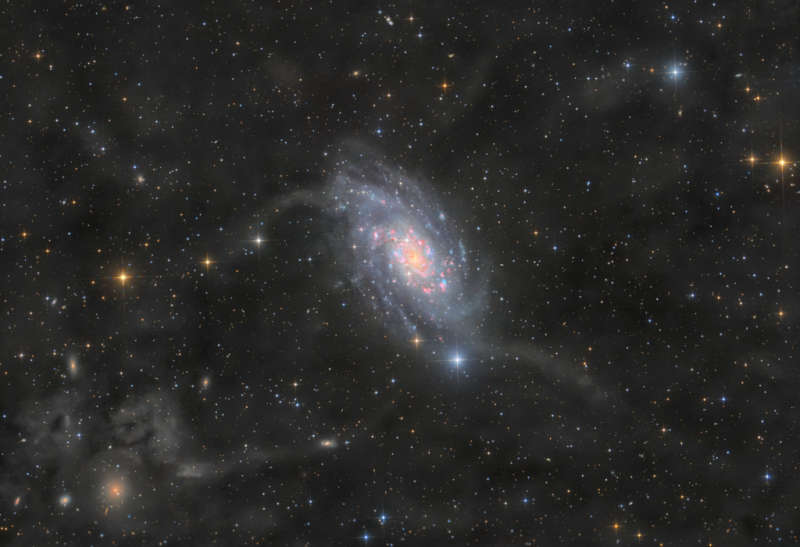
|
Credit & Copyright: (Team F.A.C.T.)
Lilian Lbt - Cyrille Malo - Maxime Martin - Clöment
Daniel - Paul Grasset - Louis Leroux-Görö
Explanation:
Magnificent island universe
NGC 2403
stands within the boundaries of the long-necked constellation
Camelopardalis.
Some 10 million light-years distant and about 50,000 light-years
across, the spiral galaxy also seems to have more
than its fair share of giant star forming
HII regions,
marked by the telltale reddish glow of atomic hydrogen gas.
The giant HII regions are energized by clusters of hot, massive stars
that explode as
bright
supernovae
at the end of their short and furious lives.
A member of the M81 group of galaxies,
NGC 2403 closely resembles a galaxy in our own local galaxy group with an
abundance of star forming regions,
M33, the Triangulum Galaxy.
Spiky in appearance,
bright stars in
this portrait of NGC 2403
are in the foreground, within our own Milky Way.
Also in the foreground of the deep, wide-field, telescopic
image are the Milky Way's dim and dusty
interstellar clouds also known as
galactic cirrus or integrated flux nebulae.
But faint features that seem to extend from
NGC 2403 itself
are likely tidal stellar streams drawn out by gravitational interactions
with neighboring galaxies.
|
January February March April May June July August September October November December |
| ||||||||||||||||||||||||||||||||||||||||||||||||
NASA Web Site Statements, Warnings, and Disclaimers
NASA Official: Jay Norris. Specific rights apply.
A service of: LHEA at NASA / GSFC
& Michigan Tech. U.
Based on Astronomy Picture
Of the Day
Publications with keywords: Camelopardalis
Publications with words: Camelopardalis
See also:
